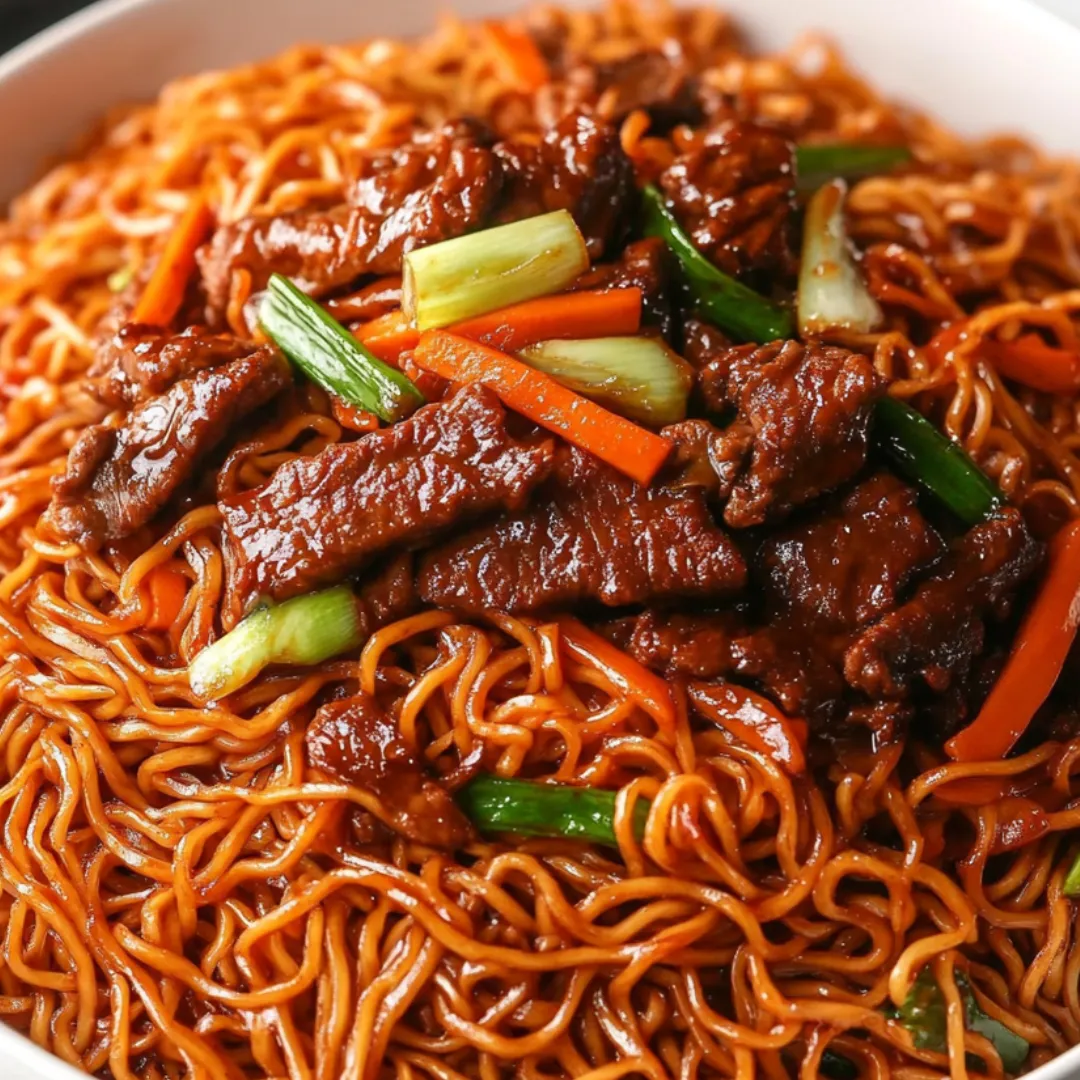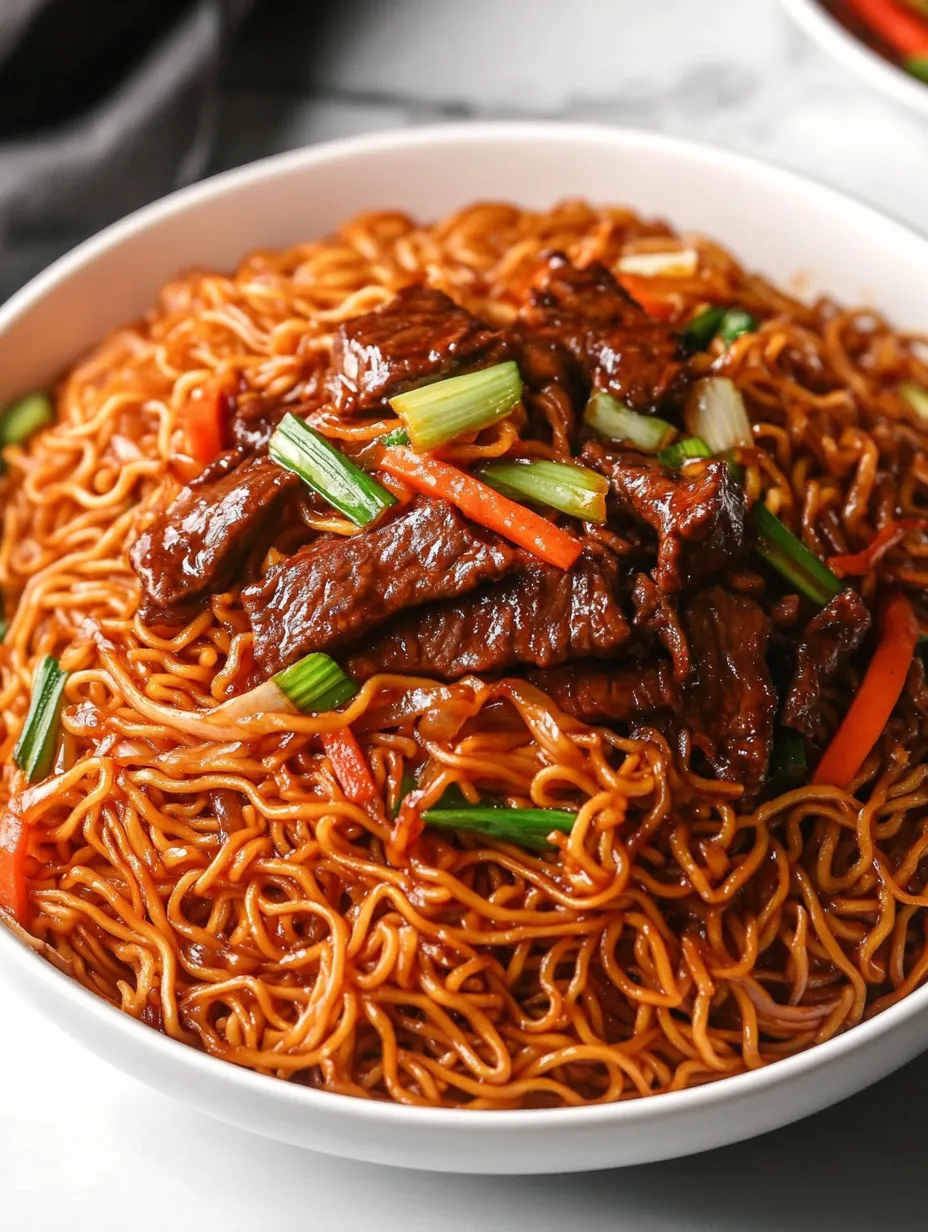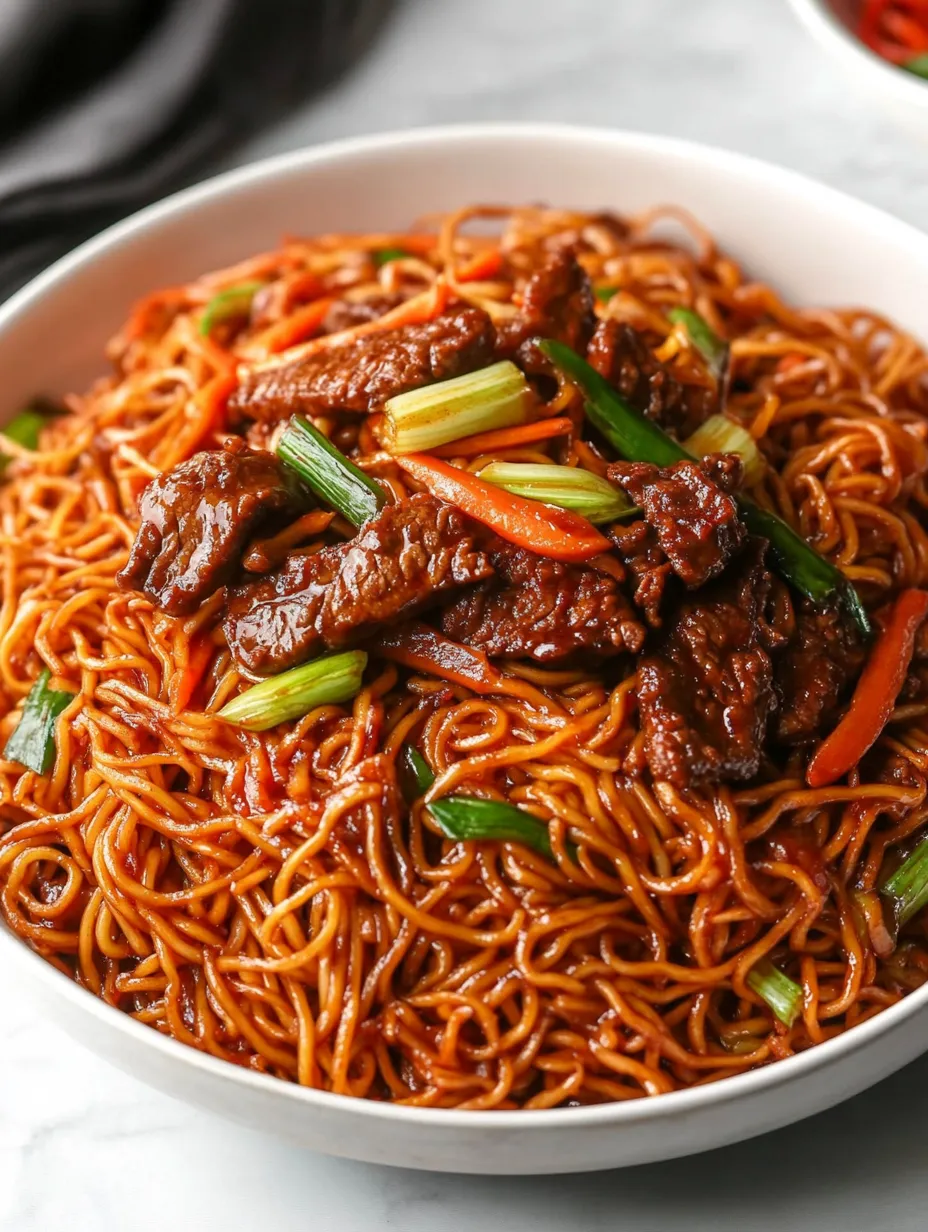 Pin it
Pin it
This hearty beef chow mein brings authentic Chinese restaurant flavors right to your home kitchen with minimal effort. The combination of tender marinated beef, crisp vegetables, and chewy noodles creates a complete meal that satisfies those takeout cravings without the wait or expense.
I first made this chow mein during a busy weeknight when I was craving Chinese food but didn't want to order delivery. My family was shocked at how authentic it tasted, and now it's our go-to alternative to takeout when we want something quick but impressive.
Ingredients
- Chow mein noodles: Fresh kind provides the authentic chewy texture crucial for true chow mein
- Flank steak: Sliced thin against the grain ensures tender meat that cooks quickly
- Mung bean sprouts: Add essential crunch and freshness to balance the rich flavors
- Napa cabbage: Provides sweetness and texture while soaking up the savory sauce
- Carrots: Julienned add beautiful color and subtle sweetness
- Green onions: Deliver bright flavor and traditional finish
- Vegetable oil: Allows high heat cooking without imparting competing flavors
- Marinade ingredients: Transform ordinary beef into tender, flavorful bites. The baking soda is critical as it tenderizes the meat through a process called velveting.
- Sauce components: Balance sweet, salty and umami notes for that authentic taste. Dark soy sauce adds color while regular soy provides saltiness.
Step-by-Step Instructions
- Marinate the Beef:
- Combine cold water, cornstarch, oil, soy sauce and baking soda with thinly sliced beef and let sit for at least 15 minutes at room temperature. The baking soda breaks down protein fibers while cornstarch creates a protective coating that keeps the meat juicy during high heat cooking.
- Prepare the Sauce:
- Mix oyster sauce, both soy sauces, Shaoxing wine, sugar, sesame oil, cornstarch, minced garlic and chicken stock in a bowl until well combined. Having this ready ensures smooth cooking without scrambling to measure ingredients once the wok is hot.
- Blanch the Noodles:
- Bring water to a rolling boil in a large pan or wok. Add chow mein noodles and cook just until they separate, about 20 seconds. Immediately drain and shake off excess water. Undercooking is intentional as they will finish cooking in the sauce later.
- Cook the Beef:
- Heat 1 tablespoon oil in a wok or large pan over medium high heat until shimmering. Add marinated beef in a single layer and let cook undisturbed for 30 seconds before stirring. Continue cooking until browned on edges but still tender inside, about 1–2 minutes total. Remove to a clean plate.
- Stir Fry Vegetables:
- Add another tablespoon of oil to the same pan. Add carrots and cabbage, stir frying quickly for 30 seconds until just beginning to soften but still crisp. Push to one side of the pan to make room for noodles.
- Finish the Dish:
- Add remaining oil to the empty side of the pan. Add blanched noodles and pour sauce over them. Toss continuously with two utensils to coat evenly, about 60 seconds until noodles absorb most of the sauce. Return beef to pan along with bean sprouts and green onions. Toss everything together for final 30 seconds until heated through and well combined.
 Pin it
Pin it
You Must Know
High protein meal with complete nutritional profile. Can be prepped ahead by chopping vegetables and making sauce the day before. Perfect for using leftover vegetables lurking in your crisper drawer.
The baking soda in the marinade is my secret weapon for restaurant quality meat. I learned this technique from a Chinese chef who explained how it breaks down the tough proteins in less expensive cuts of beef. The first time I tried it, I was amazed at how tender the meat became even with just a brief marination time.
The Perfect Noodle Choice
Authentic chow mein relies on the proper noodle type. Look for fresh yellow egg noodles labeled "chow mein" or "Hong Kong style" in the refrigerated section of Asian markets. These noodles have the perfect chewy texture that distinguishes chow mein from other noodle dishes. If you can’t find them, substitute with dried egg noodles, though the texture will be slightly different. Avoid using spaghetti or other Western pasta as they lack the proper bite and starch content.
Mastering the Wok Hei
The signature smoky flavor in restaurant chow mein comes from proper wok technique and high heat cooking called "wok hei." To replicate this at home, ensure your pan is very hot before adding ingredients and work quickly. Allow ingredients to sear briefly before stirring to develop those caramelized flavors. Home stoves typically can’t reach the intense temperatures of restaurant burners, so compensate by cooking in smaller batches and moving quickly. The brief cooking times in this recipe help preserve this delicious seared quality.
Making It Your Own
This recipe serves as an excellent base for customization. Beef can be replaced with chicken, pork, shrimp or tofu for different protein options. For a vegetarian version, increase the vegetables and use vegetarian stir fry sauce instead of oyster sauce. The vegetable components are flexible too. Try adding mushrooms for umami depth, snow peas for sweetness, or water chestnuts for extra crunch. Just maintain the ratio of noodles to proteins and vegetables for balanced texture and flavor.
 Pin it
Pin it
Troubleshooting Common Issues
Soggy noodles usually result from overcooking initially or letting them sit too long in sauce. Blanch the noodles just until separated and ensure your wok is hot enough that the sauce reduces quickly rather than steaming the noodles. If your noodles clump together, a quick rinse under cold water after initial blanching helps separate them before stir frying. For sauce that seems too thick, add a tablespoon of water. If it’s too thin, mix a teaspoon of cornstarch with cold water and stir in gradually.
Frequently Asked Questions
- → Can I use other types of noodles?
Yes, you can use lo mein noodles or even spaghetti as alternatives if fresh chow mein noodles are unavailable.
- → How do I make this dish vegetarian?
Replace the beef with tofu or extra vegetables, and use mushroom or vegetarian oyster sauce.
- → What can I substitute for Shaoxing wine?
Use dry sherry, white wine, or even chicken stock for similar flavor depth.
- → How do I prevent the noodles from sticking together?
After blanching, toss the noodles with a small amount of oil to keep them loosened.
- → Can I make this dish ahead of time?
Yes, you can prep the ingredients in advance, but stir fry everything fresh for the best texture.
